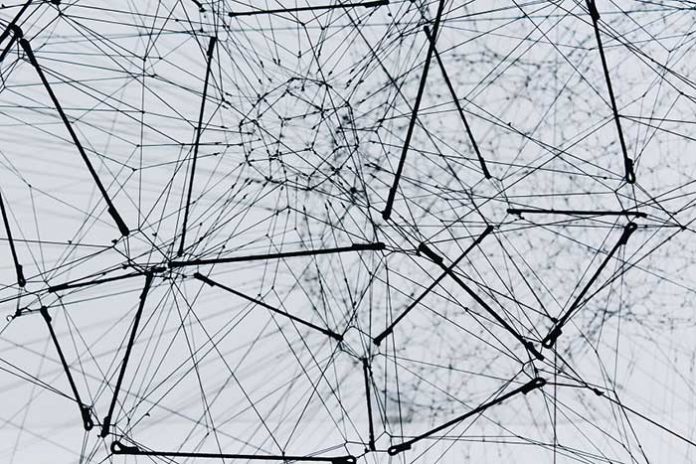Neuralink is an implantable device that has shown significant improvement over others in that it supports flexible cellophane-like conductive wires inserted into the tissue using a “sewing machine” surgical robot. This technology can help alleviate diseases of the brain (depression, Alzheimer’s, Parkinson’s etc.) and spinal cord (paraplegia, quadriplegia etc.) that have a common feature of miscommunication or lost communication between the neuronal cells.
Neural signals or nerve impulses are at the core of human experience. All our sensations, emotion, pain and pleasure, happiness, memory and nostalgia, and consciousness are as a result ohttps://www.scientificeuropean.co.uk/medicine/precision-medicine-for-cancer-neural-disorders-and-cardiovascular-diseases/f generation, transmission and reception of neural signals from one neuron to another. Smooth functioning of this translates to good health. Any aberration in this system due to injury or age-related degeneration leads to diseases. Understanding these neural processes involves sending neural signals to an external device such as a computer to analyse them and effecting any appropriate correcting measures, has been standing endeavour of science towards improvement of human life and health. This can be made possible by creating brain computer interfaces.
Brain Computer Interface is also referred to as Brain Machine Interface or neural Interface. It is a communication link between the human brain and an external device. There have been several significant advancements in this area in the recent past. Some of these devices include brain pacemaker1,2, BrainNet3,4, immortality5 and bionic organs6.
The brain pacemaker increases the connection between neurons. This involves implantation of small, thin electrical wires into the patient’s frontal lobe and then sending electrical impulses through a battery powered device, thus facilitating functional connectivity between different areas and analysing them using a computer.
BrainNet refers to enhancing the brain-computer interface to a brain-to-brain interface in humans where content from neural signals (such as memory, feelings, emotions etc.) are extracted from a ‘sender’ and delivered to a ‘receivers’ brain through the internet.
Immortality in the context of this article refers to the revival of brain functions after the death of the organism. Scientists have managed to revive the pig’s brain by metabolically providing energy of the brain.
Bionic organs refer to the development of functional organs through the use of electrical impulses as has been demonstrated by creating the bionic eye (a significant advancement to help partially blind/blind people). Bionic eye uses a glass-mounted small video camera, converts these images to electrical pulses, and then transmits those pulses wirelessly to electrodes implanted on the retinal surface. This allows the patient to interpret these visual patterns and thereby regaining useful vision.
Deep brain stimulation over the years has made the transition from wearable to implantable devices7 and has shown considerable improvements in the materials used8. Neuralink9 is one such implantable device that has shown significant improvement over others in that it supports flexible cellophane-like conductive wires inserted into the tissue using a “sewing machine” surgical robot. The precision by which the robots inserts the device makes the procedure extremely safe and reliable. The actual total size of the incision and is that of a small coin and the device is 23mm X 8mm in size. The device has received a Breakthrough Designation in July and that Neuralink is working with the U.S. Food and Drug Administration (FDA) on a future clinical trial for people with paraplegia. It is envisaged that the correction of neural signals through the use of Neuralink will be able to solve a large number of health problems provided it is proven safe in the long-term use in humans.
This technology can help alleviate diseases of the brain (depression, Alzheimer’s, Parkinson’s etc.) and spinal cord (paraplegia, quadriplegia etc.) that have a common feature of miscommunication or lost communication between the neuronal cells due to their inability to send electrical impulses. Use of this technology will improve the communication and also help identify predisposition to these diseases by monitoring the electrical impulses in the human brain. This could help humans to live a longer life free of any mental illnesses. The technology can further be exploited to immortalise the human brain and lead to development of robots with artificial intelligence similar to or better than humans of today.
***
References:
- Brain Pacemaker: New Hope For People With Dementia http://scientificeuropean.co.uk/brain-pacemaker-new-hope-for-people-with-dementia/
- A Wireless ‘‘Brain Pacemaker’’ That Can Detect and Prevent Seizures http://scientificeuropean.co.uk/a-wireless-brain-pacemaker-that-can-detect-and-prevent-seizures/
- BrainNet: The First Case of Direct ‘Brain-To-Brain’ Communication http://scientificeuropean.co.uk/brainnet-the-first-case-of-direct-brain-to-brain-communication/
- Kaku M, 2018. Technologies of the Future. Available online at https://www.youtube.com/watch?v=4RQ44wQwpCc
- Revival of Pigs Brain after Death: An Inch Closer to Immortality http://scientificeuropean.co.uk/revival-of-pigs-brain-after-death-an-inch-closer-to-immortality/
- Bionic Eye: Promise of Vision for Patients With Retinal and Optic Nerve Damage http://scientificeuropean.co.uk/bionic-eye-promise-of-vision-for-patients-with-retinal-and-optic-nerve-damage/
- Montalbano L., 2020. Brain-Machine Interfaces and Ethics: A Transition from Wearables to Implantable (February 8, 2020). Available at SSRN: https://ssrn.com/abstract=3534725 or http://dx.doi.org/10.2139/ssrn.3534725
- Bettinger CJ, Ecker M, et al 2020. Recent advances in neural interfaces—Materials chemistry to clinical translation. Published online by Cambridge University Press: 10 August 2020. DOI: https://doi.org/10.1557/mrs.2020.195
- Musk E, 2020. NeuraLink Progress Update, Summer 2020. 28 August 2020. Available online at https://www.youtube.com/watch?v=DVvmgjBL74w&feature=youtu.be
***






































